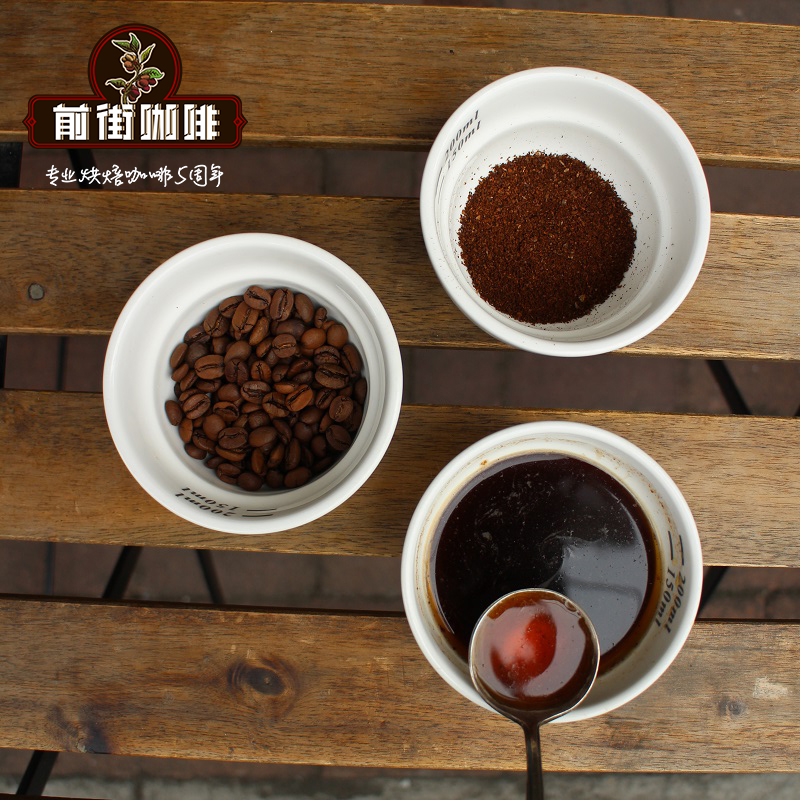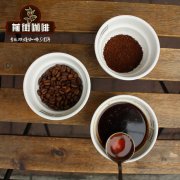From beans to cups, what is the problem that makes coffee feel astringent?

We often drink the astringent taste in the coffee, but the astringent taste is often unacceptable, and it should not have the taste in the coffee. So the question is, where does the astringent feeling come from? There are four kinds of astringency: green, dry, raw and dry. Different astringency occurs for different reasons.
Green and astringent
Hard-picked melons are not sweet, but strong-picked fruits will be green and astringent. No matter what kind of fruit in the world, if it is not harvested by force, it will make the fruit sour and sharp, the sweetness is not good, the aroma is insufficient, and the most troublesome thing is that the astringency of the fruit is obvious. The astringency that is not yet mature is green.
Green coffee beans are more common in commercial beans, because commercial beans are usually planted at low and middle elevations, and the amount of production is relatively large, so they are mostly harvested by machines, and the machines will not distinguish between green and ripe. Once the machine goes through, it is harvested indiscriminately, and commercial beans are not screening beans, so commercial beans often drink immature taste. For coffee beans at high altitude, there is no way to harvest them by machine, but mostly by hand, so this will not happen.
Raw and astringent
In the case of coffee, the unripe fruit is called green and astringent, while the roasted unripe, or the water temperature not enough when the coffee is extracted, is called astringent. Coffee made from green and astringent fruit shows astringency when it is hot. When coffee is hot, it may also modify the sour taste. Once the temperature drops to medium or low temperature, the astringency will be revealed. The colder the coffee is, the more sour and astringent it is, which is why we advocate not drinking cold coffee.
Dry and astringent
Dryness occurs when coffee beans are roasted. After the coffee is roasted, there is enough water in the beans to lubricate and preserve the coffee: if too much water is left, the coffee is not cooked; but if there is not enough moisture in the beans, the beans will be too dry and the coffee will be dry.
Dry beans in the extraction process, the coffee powder will expand very much, this sense of expansion will make you think that the coffee beans are fresh, because only the fresher the coffee beans will feel better. Beans that have been kept for a long time will absorb more water because of the higher density of contact with the air. after the beans are wet, the coffee powder will be heavier when the water content of the coffee increases. And dry coffee, even if placed for a long time and then used to extract, coffee powder will expand. If there is a serious lack of moisture, the coffee powder will produce voids like the surface of the moon during extraction.
Dry and astringent
Dryness can occur when coffee is overextracted. What is over-extraction? Excessive extraction means that coffee is brewed for too long. How long is too long? Take Syphon (plug wind) for 2 people as an example, the coffee will be boiled for more than 25 seconds (from the moment the coffee pot is put into the pot, the time to turn off the fire), there will be astringency (because the glue is destroyed), and a longer time will cause dryness. Dry coffee in the mouth will get stuck in the throat, and the throat will feel dry and sore.
Important Notice :
前街咖啡 FrontStreet Coffee has moved to new addredd:
FrontStreet Coffee Address: 315,Donghua East Road,GuangZhou
Tel:020 38364473
- Prev

Introduction to the characteristics of Baileys Flavor in COE-12 Shengye Manor, Brazil
Country of production: Brazil Origin: Hillado Manor: San Ye Manor Variety: Huang Ikatu altitude: 1200m treatment: half-sun flavor: honey small citrus grapefruit soft, smooth, clean and delicate Manor Fazenda So Silvestre has been managed by the Andrade brothers since 1991. It is located in the northern part of Minas Gerais and connects with Bahia.
- Next

The Cocoa River Cooperative in San Juan, Nicaragua, introduces a pleasant taste of sweet and sour balance.
Producing area: Manor San Juan, Nicaragua: cocoa River (del Rio Coco) Cooperative altitude: 1100-1300m varieties: Kaddura, Elephant Bean treatment: washing Grade: SHG Flavor: ground dry aroma with nutty melon seed aroma, special lavender aroma after cooking, balanced, consistent, high and smooth taste, grapefruit acid is very fine, non-irritating, non-complex burden light, aftertaste
Related
- Detailed explanation of Jadeite planting Land in Panamanian Jadeite Manor introduction to the grading system of Jadeite competitive bidding, Red bid, Green bid and Rose Summer
- Story of Coffee planting in Brenka region of Costa Rica Stonehenge Manor anaerobic heavy honey treatment of flavor mouth
- What's on the barrel of Blue Mountain Coffee beans?
- Can American coffee also pull flowers? How to use hot American style to pull out a good-looking pattern?
- Can you make a cold extract with coffee beans? What is the right proportion for cold-extracted coffee formula?
- Indonesian PWN Gold Mandrine Coffee Origin Features Flavor How to Chong? Mandolin coffee is American.
- A brief introduction to the flavor characteristics of Brazilian yellow bourbon coffee beans
- What is the effect of different water quality on the flavor of cold-extracted coffee? What kind of water is best for brewing coffee?
- Why do you think of Rose Summer whenever you mention Panamanian coffee?
- Introduction to the characteristics of authentic blue mountain coffee bean producing areas? What is the CIB Coffee Authority in Jamaica?

